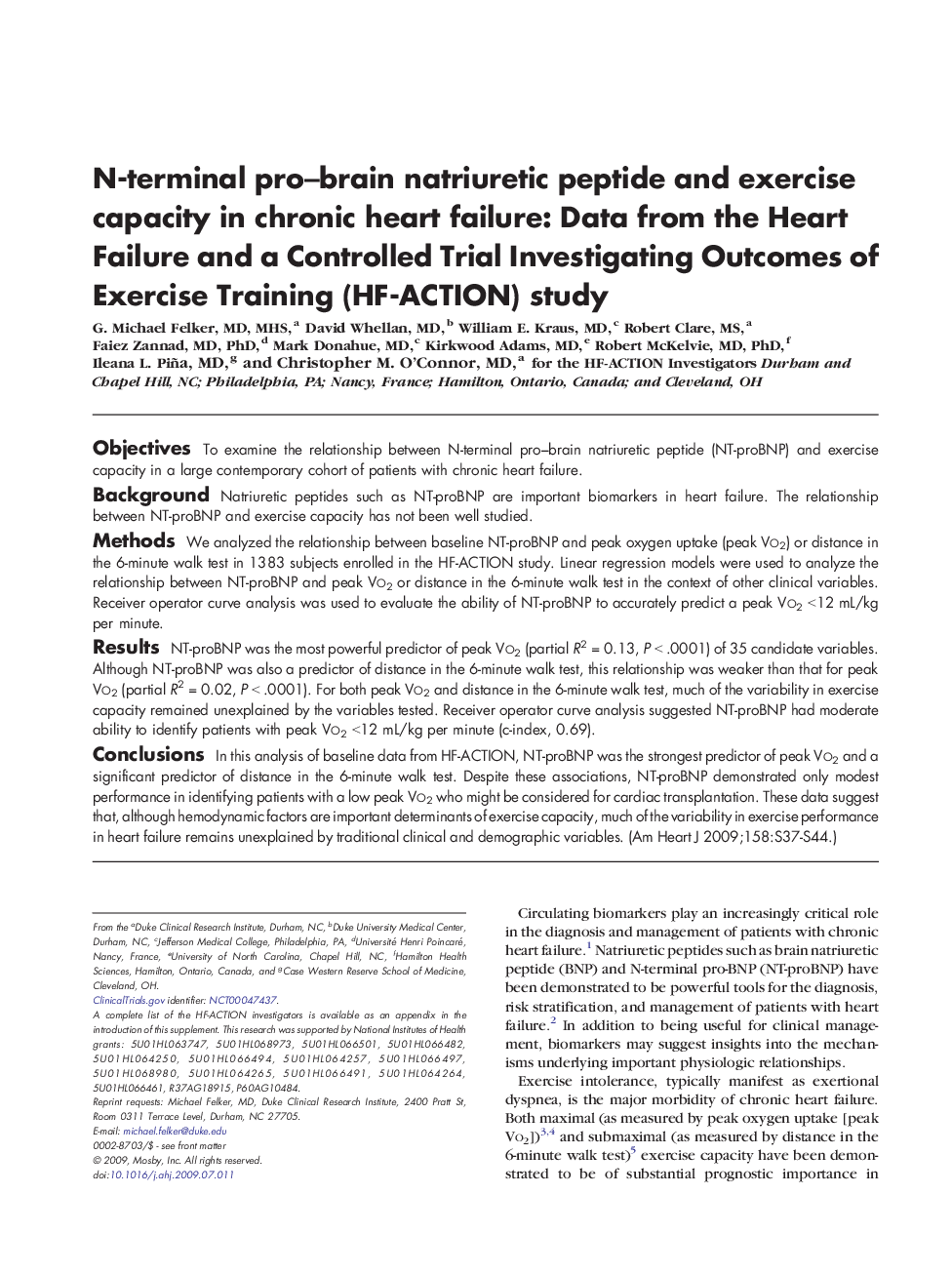| Article ID | Journal | Published Year | Pages | File Type |
|---|---|---|---|---|
| 2850563 | American Heart Journal | 2009 | 8 Pages |
ObjectivesTo examine the relationship between N-terminal pro–brain natriuretic peptide (NT-proBNP) and exercise capacity in a large contemporary cohort of patients with chronic heart failure.BackgroundNatriuretic peptides such as NT-proBNP are important biomarkers in heart failure. The relationship between NT-proBNP and exercise capacity has not been well studied.MethodsWe analyzed the relationship between baseline NT-proBNP and peak oxygen uptake (peak Vo2) or distance in the 6-minute walk test in 1383 subjects enrolled in the HF-ACTION study. Linear regression models were used to analyze the relationship between NT-proBNP and peak Vo2 or distance in the 6-minute walk test in the context of other clinical variables. Receiver operator curve analysis was used to evaluate the ability of NT-proBNP to accurately predict a peak Vo2 <12 mL/kg per minute.ResultsNT-proBNP was the most powerful predictor of peak Vo2 (partial R2 = 0.13, P < .0001) of 35 candidate variables. Although NT-proBNP was also a predictor of distance in the 6-minute walk test, this relationship was weaker than that for peak Vo2 (partial R2 = 0.02, P < .0001). For both peak Vo2 and distance in the 6-minute walk test, much of the variability in exercise capacity remained unexplained by the variables tested. Receiver operator curve analysis suggested NT-proBNP had moderate ability to identify patients with peak Vo2 <12 mL/kg per minute (c-index, 0.69).ConclusionsIn this analysis of baseline data from HF-ACTION, NT-proBNP was the strongest predictor of peak Vo2 and a significant predictor of distance in the 6-minute walk test. Despite these associations, NT-proBNP demonstrated only modest performance in identifying patients with a low peak Vo2 who might be considered for cardiac transplantation. These data suggest that, although hemodynamic factors are important determinants of exercise capacity, much of the variability in exercise performance in heart failure remains unexplained by traditional clinical and demographic variables.
